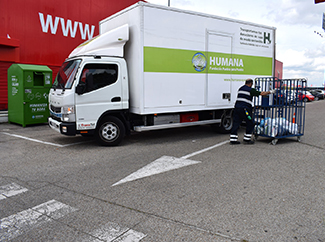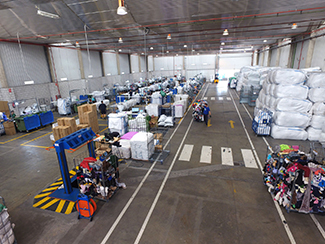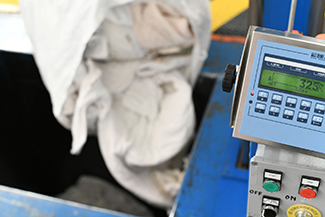consent_cookie
Duración: 1 year
Stores the user's cookie consent state
07-07-2021
The Foundation has recovered 8,456 tons of used textiles in Spain during the first half of the year to give them a second life through reuse or recycling. From January to June, more than 1.5 million donors have checked their wardrobes and deposited clothes, footwear, accessories and home textiles that they no longer use in the Foundation's containers.
The 8,456 tons recovered by Humana are equivalent to 38 million garments whose management allows to extend their useful life and implies a double benefit: environmental and social.
How much clothing is recovered in Spain: barely 10%
Each citizen discards between 20 and 30 kg of textiles each year, according to data from the Ministry of Ecological Transition and Demographic Challenge. According to the most recent reports, in Spain only 110,000 tons of textiles are collected annually, which barely represents 11% of the total waste generated in Spain. Most of it - around 900,000 tonnes - ends up in the wrong container.
And all this despite the fact that textiles are the waste with the greatest potential for reuse: 9 out of 10 garments processed properly have a second life through reuse or recycling.
The future of the sector is marked, in the first place, by the new Waste Law, pending approval in the Courts, which determines that all municipalities must establish a separate collection for textile waste before 2025 (nowadays they are not obliged to this), which will boost the recovery figures.
Second, it is essential to increase the number of containers in public space to facilitate donations from citizens; implement regulatory mechanisms that allow effective and efficient selective collection, guarantee traceability in the value chain, and make the destination of clothing visible. The existence of reliable indicators is key to the credibility of the system and to give citizens confidence.
Third, and in a three-year horizon, those who put textile products on the market will have to assume the costs and management of the waste generated, the so-called Extended Producer Responsibility (EPR), which already works for other fractions, like packaging.
The fate of used clothing
The main destination of the garments deposited in Humana's containers is the Foundation's preparation plants for reuse (in Madrid and Barcelona). A small part is sold to reuse and recycling companies. The destination of the treated garments is:


